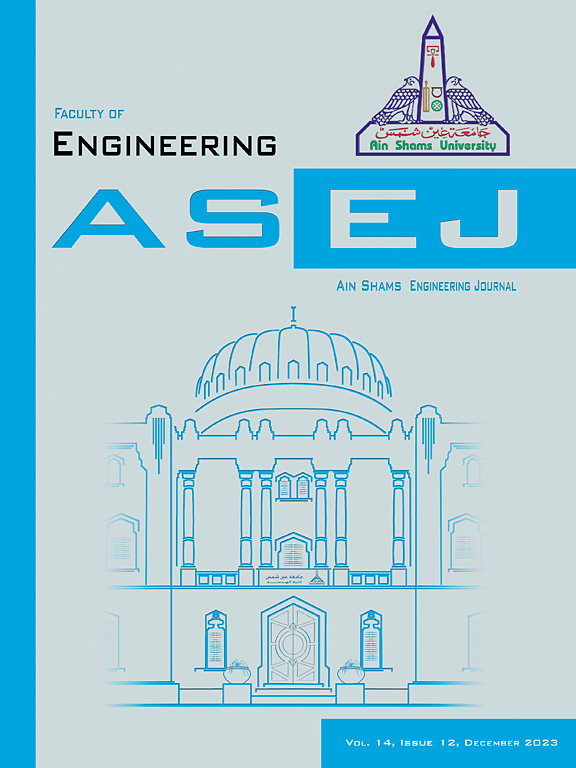Evaluation of synergetic structural and EMP shielding performance of novel conductive concrete
IF 6
2区 工程技术
Q1 ENGINEERING, MULTIDISCIPLINARY
引用次数: 0
Abstract
Protection of critical facilities, modern devices, and systems against Electromagnetic Pulse (EMP) became a vital necessity due to modern civilization’s needs. Using conductive concrete for EMP shielding became a common practice because of its low cost compared to other approaches and accessible construction and maintenance techniques. An innovative conductive concrete mixtures with an EMP shielding capability is pioneered in this study. The mechanical properties, impact resistance, and Shielding Effectiveness (SE) performance of these conductive concrete mixtures which incorporates novel/non-traditional constituents including; magnetite powder, magnetite aggregate, steel fibers, wired steel mesh, and graphite powder were investigated.
A shielding effectiveness test was performed using an utterly anechoic room following the MIL-STD-188-125-1 requirements, while the impact resistance of concrete shields was assessed using a drop weight impact test. The results demonstrated that there was evidence that the compressive behavior of such conductive mixtures was increased by up to 21.5% relative to normal concrete due to incorporating fine and coarse magnetite aggregate in concrete shields. Furthermore, the incorporation of steel fibers significantly enhanced the splitting tensile properties by about 101% compared to the fibreless concrete specimens. Also, a superior 1st crack and fracture impact energy was sustained by concrete panels, owing to utilizing steel wired mesh and fibers in concrete shields, by about four to six times that of its non-reinforced counterparts. Also, the utilization of the indicated conductive constituents in the fabrication of concrete shields led to a significant improvement in SE performance by up to 196% compared to that of normal concrete constituents. This research underscores the potential to engineer novel conductive concrete shields with superior impact resistance and EMP shielding for the protection of critical infrastructure.
新型导电混凝土的协同结构和电磁脉冲屏蔽性能评估
由于现代文明的需要,保护关键设施、现代设备和系统免受电磁脉冲(EMP)的侵害已成为一项至关重要的必要条件。使用导电混凝土进行电磁脉冲屏蔽已成为一种普遍做法,因为与其他方法相比,导电混凝土的成本较低,而且易于施工和维护。本研究开创了一种具有电磁脉冲屏蔽能力的创新型导电混凝土混合物。根据 MIL-STD-188-125-1 的要求,使用完全消声室进行了屏蔽效果测试,同时使用落锤冲击测试评估了混凝土屏蔽的抗冲击性。结果表明,有证据表明,由于在混凝土防护罩中加入了细粒和粗粒磁铁矿骨料,这种导电混合物的抗压性能比普通混凝土提高了 21.5%。此外,与无纤维混凝土试样相比,钢纤维的加入使劈裂拉伸性能显著提高了约 101%。此外,由于在混凝土防护罩中使用了钢丝网和纤维,混凝土面板所承受的第一裂缝和断裂冲击能量是非加固混凝土面板的四到六倍。此外,与普通混凝土成分相比,在制造混凝土防护罩时使用所述导电成分可显著改善 SE 性能,最高可达 196%。这项研究强调了设计新型导电混凝土防护罩的潜力,这种防护罩具有卓越的抗冲击性和电磁脉冲屏蔽性,可用于保护关键基础设施。
本文章由计算机程序翻译,如有差异,请以英文原文为准。
求助全文
约1分钟内获得全文
求助全文
来源期刊

Ain Shams Engineering Journal
Engineering-General Engineering
CiteScore
10.80
自引率
13.30%
发文量
441
审稿时长
49 weeks
期刊介绍:
in Shams Engineering Journal is an international journal devoted to publication of peer reviewed original high-quality research papers and review papers in both traditional topics and those of emerging science and technology. Areas of both theoretical and fundamental interest as well as those concerning industrial applications, emerging instrumental techniques and those which have some practical application to an aspect of human endeavor, such as the preservation of the environment, health, waste disposal are welcome. The overall focus is on original and rigorous scientific research results which have generic significance.
Ain Shams Engineering Journal focuses upon aspects of mechanical engineering, electrical engineering, civil engineering, chemical engineering, petroleum engineering, environmental engineering, architectural and urban planning engineering. Papers in which knowledge from other disciplines is integrated with engineering are especially welcome like nanotechnology, material sciences, and computational methods as well as applied basic sciences: engineering mathematics, physics and chemistry.
 求助内容:
求助内容: 应助结果提醒方式:
应助结果提醒方式:


